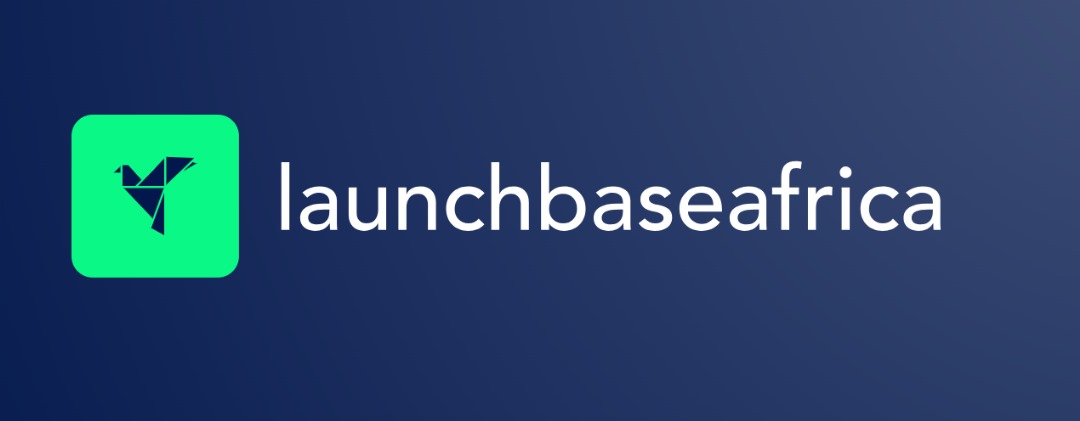Last week, U.S. President Donald Trump signed into law the Guiding and Establishing National Innovation for U.S. Stablecoins (GENIUS) Act, the first stand-alone legislation to focus specifically on dollar-pegged crypto tokens. U.S. Secretary of the Treasury, Scott Bessent, called stablecoins “a revolution in digital finance.” “The dollar now has an internet-native payment rail that is fast, frictionless, and free of middlemen. The GENIUS Act provides the fast-growing stablecoin market with the regulatory clarity it needs to evolve into a multitrillion-dollar industry. The signing of this bill marks a seminal moment for digital assets and dollar supremacy,” Bessent added.
Launch Base Africa sat down with Gillian Darko, Chief of Staff and Director of Strategy at Yellow Card, to discuss the significance of this landmark legislation, the rise of stablecoin usage across Africa, and how African regulators are already shaping the global crypto landscape.
LBA: Gillian, welcome, and thank you for taking the time to speak with us today. Could you explain the key elements of the Genius Act and its impact on U.S. stablecoin regulation?
Gillian Darko: Thank you for having me! It’s truly exciting to witness the progress as it unfolded last week. To start, when we look at stablecoins, I recently heard someone say that the infrastructure for stablecoins is akin to semiconductors in the digital revolution. Stablecoins are the settlement layer for tomorrow’s economy.
When it comes to the Genius Act, what makes it a big deal is that it formalizes what we’ve been saying at Yellow Card over the last couple of years — what our customers and partners have also been saying. This Act marks the first comprehensive U.S. federal law governing payment stablecoins. From a legal standpoint, it officially defines stablecoins as fully-backed digital tokens designed for payments and settlement. It clarifies that only regulated entities can issue them, and it also specifically excludes algorithmic and undercollateralized coins.
Why is this important? It signals that stablecoins are now officially recognized as a means of payment. This means that from now until the act takes effect in 2027, traditional institutions can adopt stablecoins for transactions, cross-border payments, and simplifying payment complexities.
LBA: Given the inconsistent U.S. approach to crypto, what are the potential global ripple effects of the Genius Act? Should African countries adopt similar laws for stablecoins, and how does this affect the industry’s perceived independence?
Gillian Darko: While the Genius Act is exciting, it’s important to note that Africa has been ahead of the curve in some respects. If we look back to January 2024, for example, we saw the Bitcoin ETF and the acquisition with Stripe, signaling a growing recognition of the industry. The U.S. has definitely made strides, but the fact is that the African continent has been proactive. At Yellow Card, we were one of the first to get licensed in Botswana and South Africa as a Virtual Asset Service Provider (VASP), and we continue to collaborate with regulators in many African countries.
So, while the U.S. is catching up, Africa has been making meaningful progress. We’ve seen firsthand how stablecoins positively impact sectors like agriculture and manufacturing. Our regulatory framework in Africa is supportive of this growth, and we’re proud of the part we’ve played in shaping it. That said, I am excited about the Genius Act, and I believe it adds to the momentum.
LBA: How does the Genius Act specifically impact Yellow Card’s operations and regulatory standing?
Gillian Darko: To understand the impact on Yellow Card, it’s important to define what we do. Our business focuses on providing infrastructure and services to B2B clients through partnerships with liquidity providers like Circle and Tether.
As for the Genius Act, yes, it positively reinforces the stablecoin adoption we’re already seeing. Stablecoins, as we know, help mitigate issues like currency volatility and depreciation, which is crucial in markets where local currencies are weakening. Africa, particularly Nigeria, leads in crypto adoption, and stablecoins provide an effective way for individuals and businesses to hedge against currency risks.
The World Bank reports that remittance costs in Sub-Saharan Africa remain high — around 7.9%. With stablecoins, we can drive down these costs and improve financial inclusion. The Genius Act affirms that stablecoins are here to stay, and global adoption is happening rapidly, as evidenced by our recent partnership with Visa.
LBA: Does Yellow Card issue its own stablecoin, and do you have plans to launch one?
Gillian Darko: No, we don’t.
LBA: Can you elaborate on your partnerships with stablecoin issuers like Circle and Tether?
Gillian Darko: Yes, we work with Circle, Tether, and PayPal. We use USDT, USDC, and PayPal’s PYUSD stablecoin.
LBA: Considering recent events in Ghana and that stablecoins are often a regulatory grey area, is Africa’s regulatory environment supportive of crypto, and are regulators taking the right approach?
Gillian Darko: Regarding Ghana, we’ve been very transparent in our communications and have always supported the Bank of Ghana (BOG). The BOG issued draft digital asset guidelines last year, with new regulations expected in September. We are fully committed to complying with those regulations, having already registered in line with their guidelines.
I wouldn’t say that the regulatory environment in Ghana is behind. What I’d emphasize is that each regulator’s goal is to ensure that consumers are protected, transparency is maintained, and the ecosystem is allowed to thrive. We’re working closely with regulators in all the African countries where we operate to help achieve these goals. So, while the landscape may be evolving, we’re confident that regulators are doing their part, and we’re playing an active role in supporting them.
LBA. What has Yellow Card’s regulatory journey been like across its key African markets?
Gillian Darko: Well, a lot of work has been done across the different markets. To begin with, one of the things I can confidently say about Yellowcard is that when we say we are Pan-African, we truly mean it. We have a presence across West, Southern, and East Africa, and our footprint is expanding.
Let’s take East Africa for example. Yellowcard has been involved in Kenya by working with the Kenyan parliament, where we were personally asked to draft new digital asset laws as part of the Kenyan Blockchain Association. We’ve also been part of the CMA Fintech Sandbox Committee. While the FRC has not yet listed us as accountable institutions, we are working on that as well. So, in Kenya, we are playing a significant role in shaping regulatory frameworks.
In Uganda, we are part of the Bank of Uganda’s Fintech Sandbox application, and we also have an FIA registration. Similarly, in Rwanda, we’ve been invited to make presentations to the BNR and the CMA. Our presence is also felt in Tanzania and Zambia, where we are part of the regulatory sandbox. The list goes on. The key point is that wherever we can have a positive impact on regulatory frameworks, we make sure we do so.
LBA: Which African region presents the most resistance to cryptocurrency adoption?
Gillian Darko: I would say that Northern Africa has a lot of changes waiting to happen. Having said that, there’s been remarkable progress in Morocco. It’s not all doom and gloom. The rest of Northern Africa is making changes, with Morocco leading the charge.
LBA: With rising interest in stablecoins from African fintechs, how has this impacted your operations, and what is your perception of the current state and growth of the stablecoin ecosystem in Africa?
Gillian Darko: First of all, I would say that 2025 is shaping up to be the year of stablecoins. There’s a tremendous amount of interest in them. To give you some concrete numbers, remember that Chainalysis reported Nigeria as one of the biggest markets for crypto adoption. In Q1 2024, stablecoin transfers in Nigeria approached $3 billion, with the USDT/NGN pair becoming the most traded on centralized exchanges. For the full year of 2024, Nigerians received $24 billion worth of stablecoins, the highest in Africa and second globally. Stablecoins are now dominating transactions over $1 million, which shows their growing importance in daily financial activities.
These numbers reflect the rapid adoption of stablecoins. The market cap for USDT, USDC, and other stablecoins is expected to rise to around $257 billion. The real question, though, is why are people using stablecoins? It’s all about solving real-world problems. Stablecoins help with currency volatility. There’s also a USD scarcity for many businesses. Whether in agriculture or manufacturing, we’re helping businesses with their payments. All of this points to Africa becoming a hub for stablecoin usage.
LBA: What is your perspective on the recent influx of fintech companies into the stablecoin space in Africa?
Gillian Darko: A lot of companies have been using stablecoins for a while, so I wouldn’t call it a sudden influx. It’s been happening gradually. Right now, however, there’s just more attention and conversation about it, which makes it seem like a rush into the space. But these companies have been in the market for a while, and now traditional institutions and fintech players are also developing their own stablecoin strategies to tap into this growing market.
LBA: What lessons has Yellow Card learned from operating in Africa, and what is the key to its resilience and competitive advantage?
Gillian Darko: One thing I’d emphasize is that a company is only as good as its people. We operate in 20 African countries, and we understand the cultural nuances and the challenges. What we’re building is infrastructure that simplifies something that’s traditionally fragmented and complex on the continent. We’re providing the solutions that businesses need.
We understand that we can’t do this alone. That’s why we collaborate with regulators, governments, clients, and partners to find the best solutions. We keep learning and adapting. Yes, there have been failures in this market, but I’m proud of how we continue to adapt. We understand the markets and what solutions our customers and partners need to achieve long-term success.
LBA: How significant was the strategic shift from a B2C to a B2B model for Yellow Card?
Gillian Darko: The transition has been a strategic one. We saw the momentum and understood where technology was heading. It’s been a positive move, and we’re continuing to push forward. We started with a consumer product and have now transitioned to B2B, which has generated a lot of traction. The key thing here is solving real-world problems and providing solutions. That’s what fintech is all about — financial inclusion and leapfrogging traditional systems that sometimes leave people behind. With Africa’s fragmented financial systems, we need new technology to move things forward.
LBA: What is your 5-to-10-year vision for the African crypto market, particularly with the influence of new regulations like the Genius Act?
Gillian Darko: I’m optimistic about the future. I’ve said before that Africa is the cradle of life, and when it comes to technology, I believe we are in the right place. We are growing this technology and ensuring it’s used properly. I see it continuing to grow and providing real-life examples of success.
The youth demographic and adoption rates indicate that one in five people on the planet will be African by 2050. As our population grows, so will our needs and wants. Africa will continue to lead the way in using technology. I can only see positive things ahead. As I said, Africa is the cradle of life, and this technology is set to boom here.
LBA: We’re excited to see how Yellowcard continues to grow and shape the future of digital finance in Africa. Thank you for sharing your insights with us today, Gillian!
Gillian Darko: Thank you so much for having me. It’s always a pleasure to share what we’re working on at Yellowcard, and I look forward to what’s ahead for the African crypto ecosystem.


